If you’re anything like me, you might be intimidated when you walk into a Michelin star-rated culinary institution like Spago in Beverly Hills. And when you walk through those double doors off North Canon Drive you might assume the bar you pass on the way to your table is second to the food you are about to consume. But here’s the thing: you’d be wrong. Spago’s cuisine, and particularly Executive Chef Lee Hefter, challenges everything you believe about food. And the cocktail program challenges everything you think you know about spirits, not to mention fine dining altogether.
Hefter, the Managing Partner and Executive Corporate Chef for Wolfgang Puck Fine Dining Group, Catering and Events, is world renowned for his vision in cuisine, especially in regard to the Spago (Wolfgang Puck’s flagship restaurant) and CUT brands. But few know he’s actually an advocate for exceptional cocktail programs within fine dining establishments. The James Beard award-winning chef has been working alongside Puck for 23 years, and in his time at the company he’s been responsible for developing several menu concepts worldwide. And as he has pushed the envelope with the company’s cuisine, he has been doing the same for cocktails. Although Puck has a (very) respected wine program, Hefter saw the company lacked a cocktail program that was on par. So he pitched and developed the program himself.
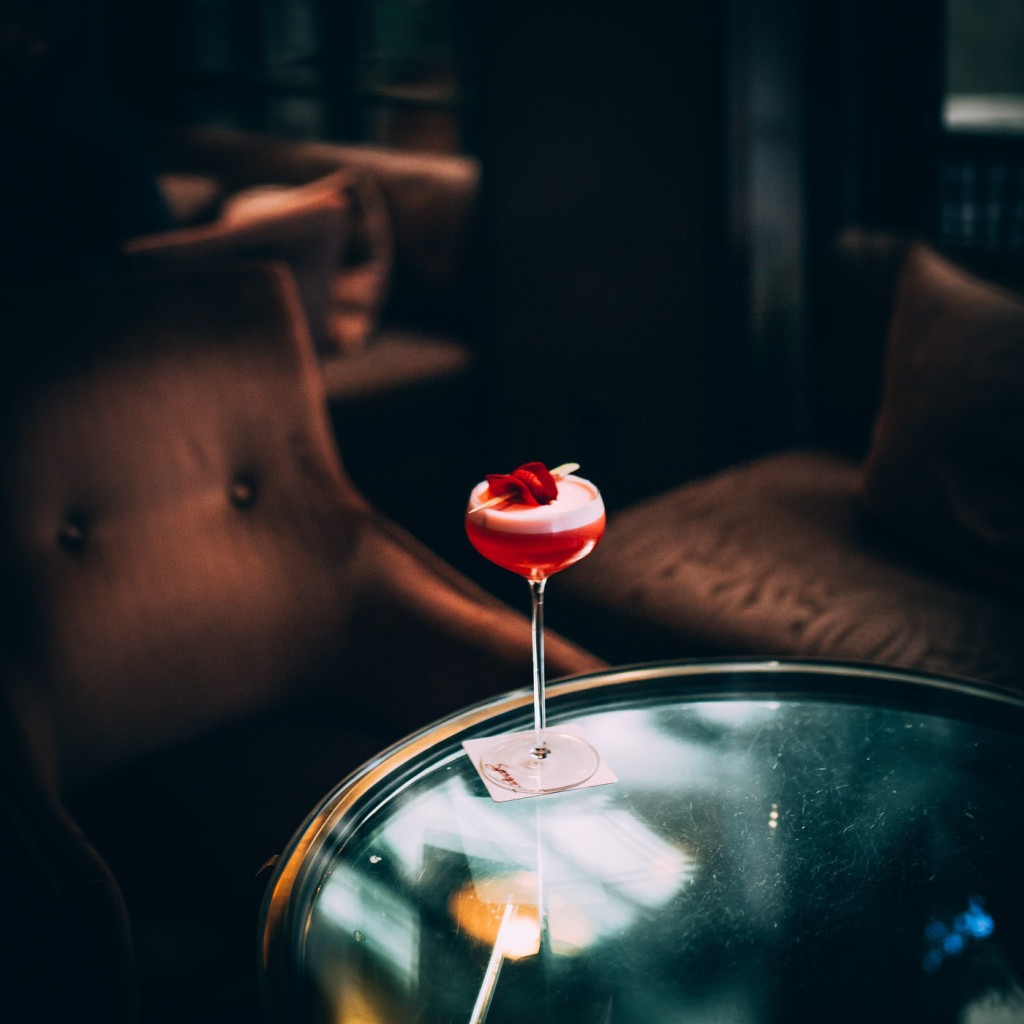
Forbidden Kiss
4 each – Raspberries (muddled)
1 each – Egg white
1 ½ oz. – Hendricks Gin
¾ oz. – Fresh lemon juice
¾ oz. – Simple syrup
½ oz. – Rose elixir
½ oz. – Grenadine (Roses)
Directions:
Combine liquid ingredients and dry shake without ice to emulsify the egg white. Then add ice and shake vigorously, then fine strain through a mesh strainer to prevent raspberry seeds from entering drink. Garnish with a rose petal wrapped raspberry.
Suggested glassware: tall coupe.
And he did so with a sense of humor. While you might be eating the highest-quality cuisine available (you don’t receive two Michelin stars for nothing), if you want a cocktail you’re going to have to leave your ego and sense of propriety at the door. On Spago’s extensive rotating cocktail menu, you’ll see names like Indecent Exposure, Looking For Love, Angels and Politicians, or Sexual Healing. And the cocktail you order is going to be so delicious you might need to have two.
In Hefter’s restaurants, the kitchen and bar work as a team to prepare and execute these beverages. The chefs prepare the cocktail juices, syrups and infusions in advance. This assures there is quality control over how each cocktail will taste (the bartender and chefs will taste everything that is prepared before the shift) and the bartender is able to focus more exactly on the execution of each cocktail—not to mention your syrups are made by the best chefs around.
And after 20 years of traveling back and forth to Japan, Hefter noticed the way bartenders made their cocktails not only was visually and aurally alluring, but it chilled and aerated the cocktails to perfection. So he decided to incorporate that technique in his restaurants. All Spago and CUT bartenders are now trained in the traditional style of the Japanese Hard Shake.
I had the opportunity to sit down with Chef Hefter to talk about his enthusiasm for cocktails and his journey to changing the way fine dining approached spirits. By the end of our discussion, I was awed by his knack for balancing his dedication to the company vision while also maintaining approachability. And after we spoke, I tried a drink (or two). And I’ll admit, they were some of the best I’ve had.
If you want to expand your palate, go to Spago and sit at the bar. Swallow your pride and order a Forbidden Kiss. You’ll learn something about yourself. And also what it means to have a damn good cocktail.
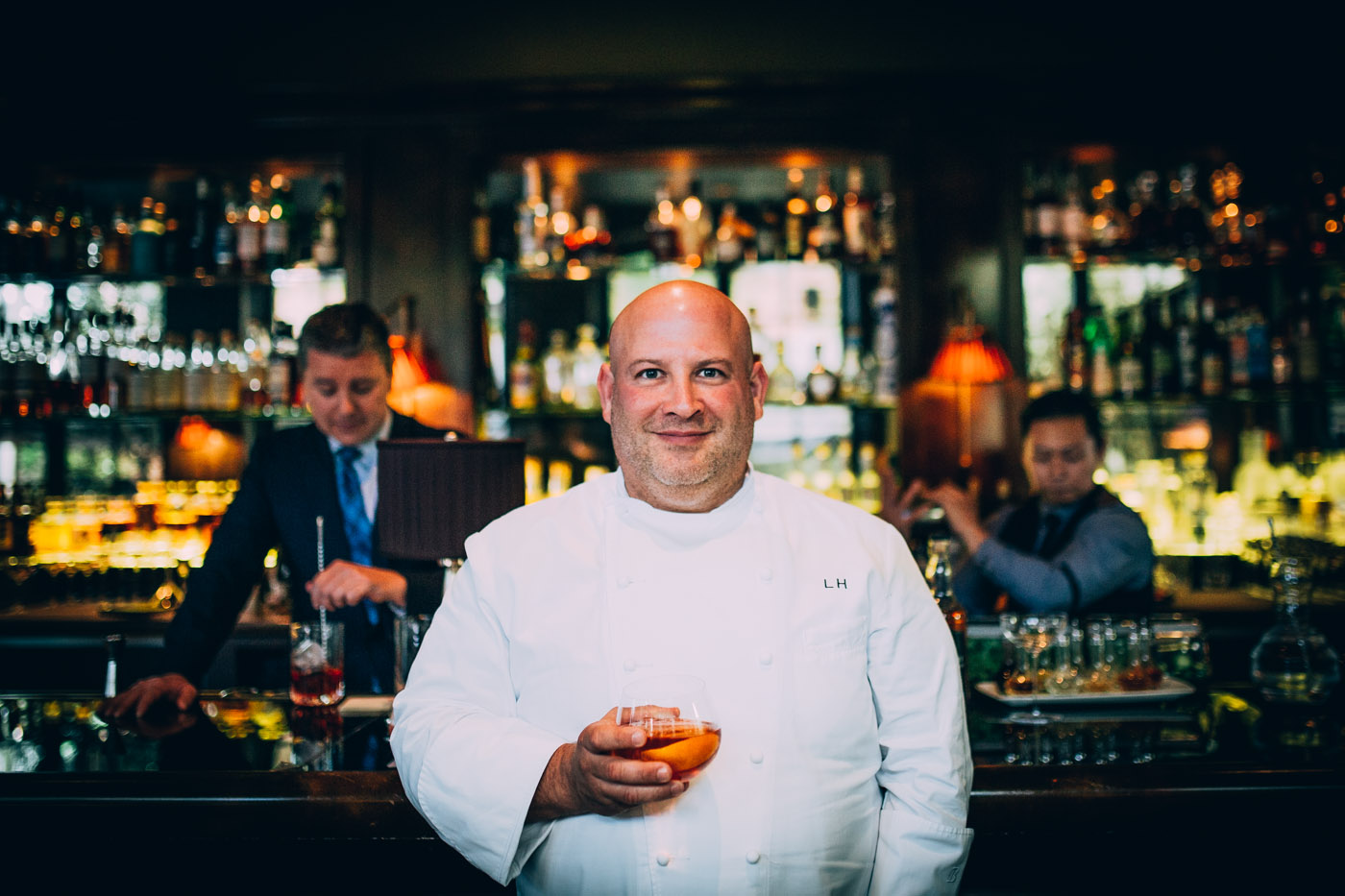
Everyone knows you as a chef, but you developed the bar program [for Wolfgang Puck]. Do you have a background in cocktails?
It’s more of an infatuation. Being in the restaurant industry, we’re always suggesting cocktails or spirits. I’ve been in this business for 32 years. Along this path I’ve traveled extensively throughout the world and was able to go to great cocktail bars, whether in Paris, London or Japan. It’s always been an important part of my life.
I’d say about eight years ago, I wanted to increase our relevancy in our company and make our package as complete as possible. So I put forth an idea to make our group a really competitive cocktail program. With that being said, I took a chef’s approach to things. A lot of the flavor profiles are balanced around sweet and sour, salty and herbaceous, bitters, and infusions—whether it’s a tea infusion, spirit infusion or syrup infusion—and then all of them are calculated, balanced out and measured out so we maintain consistency in execution. Then, aesthetically—hand carving ice, buying great glassware—and surrounding myself with great individuals.
I always name my cocktails with something that has absolutely nothing to do with cocktails. It’s an icebreaker. I want them to be provocative; I want them to be like a coffee table book—something to talk about. If you read some of the names, some of them are a little more racy than others, and some I can get away with in some places, but can’t get away with in others.
What’s your favorite name?
Probably I’m So Sexy. You think about the person at the bar who has to say, “I’m So Sexy, please.”
There’s humor behind it…
There’s humor and thought. It’s my way of being creative in not only the making of the cocktail, but in the actual naming of the cocktail. If you trace back cocktails, they all have great names from great eras. And cocktails have erupted, especially in America. I think it’s a great thing that we were a part of the wave. I certainly don’t think we were the first ones doing it. But we got on the page and we did it in our own way, which is what we’re about. We do food in our own way, we do service in our own way, and we do cocktails in our own way.
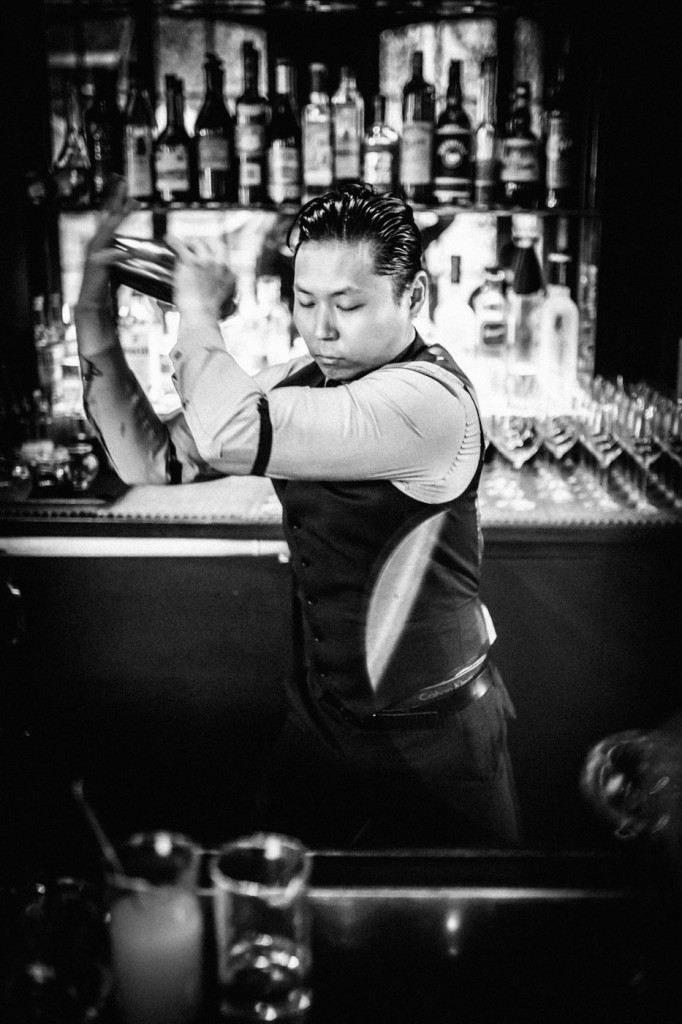
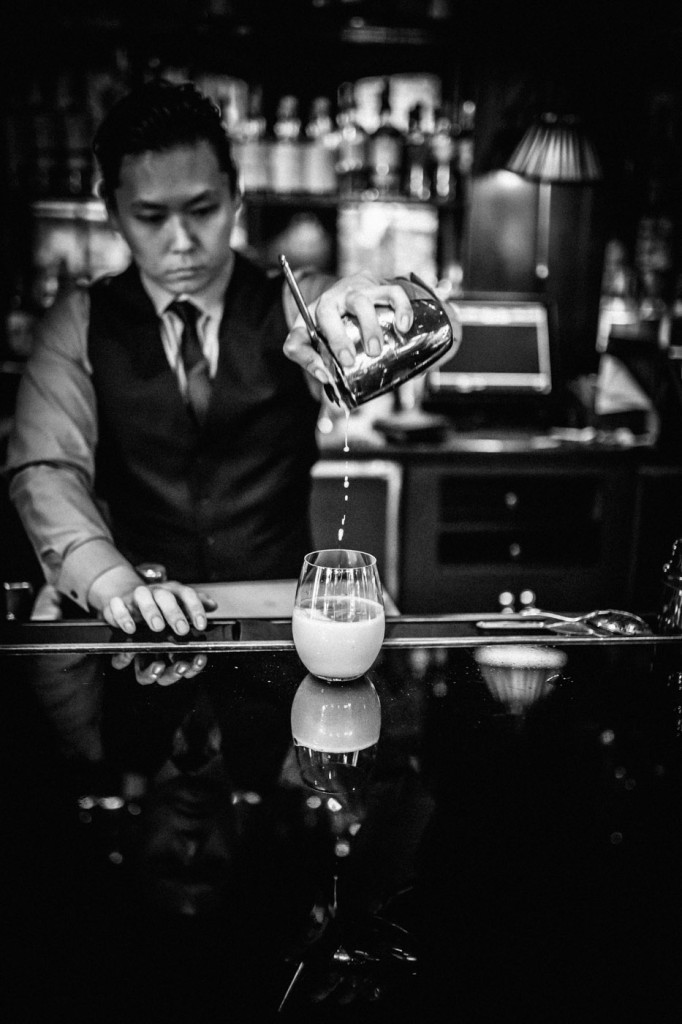
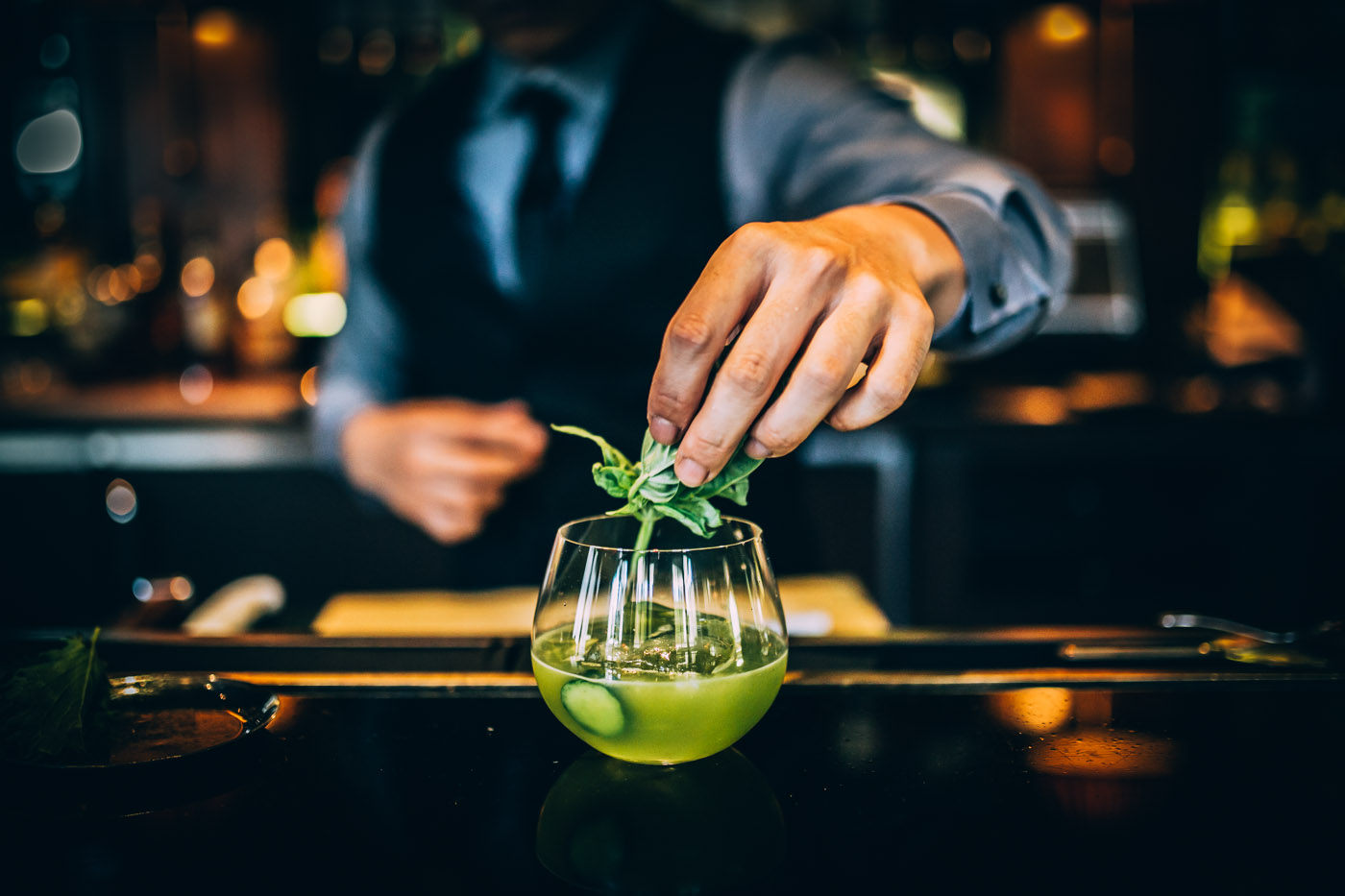
When coming up with new drinks, you’re also more open to possibilities, rather than pigeonholing yourself by sticking to a theme.
Exactly. We’ve got about 100 of our own handcrafted cocktails. We rotate them through here and all of our restaurants, so I try not to overlap. But some of them carry over to all the other restaurants too—the fine-dining restaurants of the CUT or Spago brand.
What’s great is we’ve started introducing several different barrel-aged cocktails. Some people are making bitters for me now. We’re creating the recipes and we’re aging bitters, which is good. I have great guys, like my sommelier Phil [Dunn] is always looking for new spirits for me to mix with. And my head bartender, Andrew [Kim], has been great. I bring him the recipes and he makes adjustments. He’s been a wonderful asset.
What does the process look like when you’re coming up with new cocktails?
When I think of a cocktail, I first think of what I want to drink and what I enjoy. It’s not an ego. I don’t do something that’s molecular or contrived. I do something that makes sense to me and that I want to enjoy myself. Then after we do that, we play around with what food possibilities will go great with it so we know what we would offer with the new cocktail.
Do you offer cocktails on the menu seasonally? Or is it constantly rotated?
We rotate. Every week, Andrew puts on three or four new ones, or he’ll bring back an old one. We have between 25 and 30 cocktails on the list here [at Spago], and it’s always rotating. There’s a core we always leave on that people just can’t do without. Actually, one of my favorite names is a newer cocktail we made in the last year called Indecent Exposure. It’s half tequila and half mescal. People love it because people can be afraid of mescal, but when you mix it with tequila you get the attributes of the smokiness of the mescal without it being overwhelming. It’s a really good way to say, “Wow, I really do like mescal.”
It’s the same values we attack cooking with. We have the best spirits, the best glassware, the best ice, the best of everything. Everything is top quality, as it is with Spago. It correlates the same philosophy that we do here, and that’s why I think our program is very successful.
If you’re going to consume something, it might as well be the best of the best.
If you’re going to drink your poison, it better be a good one.
You make all of your syrups in the kitchen here?
Everything. The chefs make the syrups. Whether you’re a sous chef or a pastry chef, everyone who’s involved makes the syrups that we use in the kitchen, so then the bartenders get a product that’s consistent.
You rarely go to a bar or restaurant where the chef is involved in the cocktails.
In all my restaurants, it’s the same way. The chefs prepare the syrups and they prepare all the infusions for the bar because I feel as though my first medium as chef is cooking and my guys will be controlling recipes. They’re very keen on making recipes, so they understand it. They understand how to rotate it properly, how to make things properly, and how to ensure the juices are made fresh every day—we juice everything fresh in the kitchen for the bar. The bar then, essentially, has to come in, set up their bar, and execute these recipes perfectly. I felt that if I could eliminate them from having to stress about preparing products, their focus on execution would be even better.
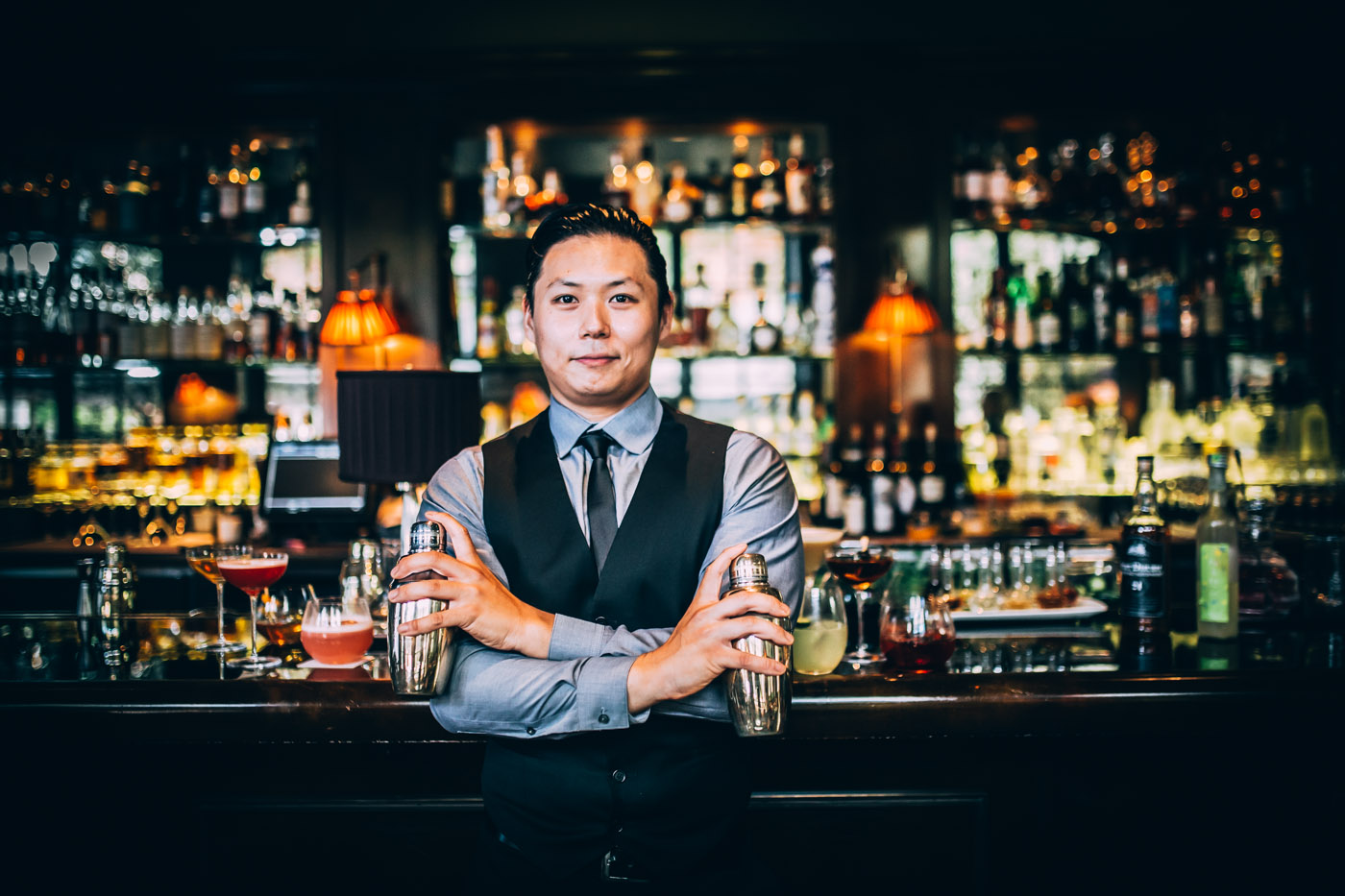
I’d be curious to be a fly on the wall and observe the relationship between the chefs and bartenders. Can there be ego involved?
There’s no ego. You eliminate ego by not allowing people to present their ideas until they’ve been with me for a while and have executed my ideas perfectly. Andrew can now present ideas because he has proven himself. We have one vision: to provide the customer with a great experience. When you have that vision and you buy into that, it eliminates ego. I don’t have an ego, so why should anyone have an ego? The end result is it’s a group effort. The kitchen does their job, you do your job, and we’ll provide the customer with a great experience.
You need to maintain a consistent vision, but you do allow some creativity.
I do, and we stay within the parameters of what we do. It’s the same thing with food. [Chef de Cuisine Tetsu Yahagi] makes great food and he runs the kitchen, but he stays in the parameters of what we understand Spago to be. It actually fortifies a great relationship between the head bartender and the chef. The head bartender tastes all the syrups and infusions with the chef every day, and they both say if everything is good to serve.
Remember, I want my customer who comes to CUT or Spago and has one drink—like a Rolling Fog—and goes to Singapore, I want it to be the same. As much as I expect the cuisine at Singapore’s CUT to be the same as Beverly Hills’ CUT, I expect the same for the drinks.
What’s the idea behind rotating the menu so frequently?
We have a lot of regular customers who want to be entertained with a new drink or a new name or something to talk about. If they’ve had a drink that’s on the menu, or that’s not on the menu, they can ask for it and we’ll make it for them. We have such a good amount of cocktails that to rotate them keeps everybody inspired. It keeps the bartenders inspired to show something new.
I’d be curious to hear about that. Once you know the basics, you’re good to go. But they have to learn a lot of new recipes constantly.
It’s a lot. In Singapore, we have a very busy bar. There are probably the most amount of cocktails there. There are probably about 55 on the menu. The bartenders who are there know them by heart. It’s amazing. It’s their job, and they do it well. If it’s impressive, the customers come back—and they have so many regulars who come back. We have to capture the audience. You have to change the menu.
You went to Japan and learned about the Japanese Hard Shake. Why did it grab you? And why did you decide to incorporate it here?
Growing up here, everybody uses Boston shakers—it’s a two-piece shaker. It’s pretty much a standard kind of shake. Even though a lot of the great cocktail bars use Boston shakers, I frequently traveled to Asia over the last 20 years, and one thing that’s consistent is it’s such a great sound; it’s like a mating call. You just don’t get that sound with anything else but the hard shake. Not only is it a sound, but it’s a performance. If you visually watch somebody throw their whole body into this hard shake, it’s everything they have to make and aerate that drink properly.
I just thought it encompasses everything I want out of a cocktail. It’s not just drinking that cocktail—because I am a martini drinker, and it’s still important to get that hard shake for the martini—it’s the theatrical part of it that draws me in every time I hear it. It’s hypnotic when you watch it, and you can’t wait. You savor the anticipation of that cocktail when you hear the hard shake. It’s something I’ve been attracted to. As much as I’m attracted to Japanese cuisine and introduced that into our cooking, it’s the same thing with the hard shake.
—
Spago
176 N Canon Dr, Beverly Hills, CA 90210





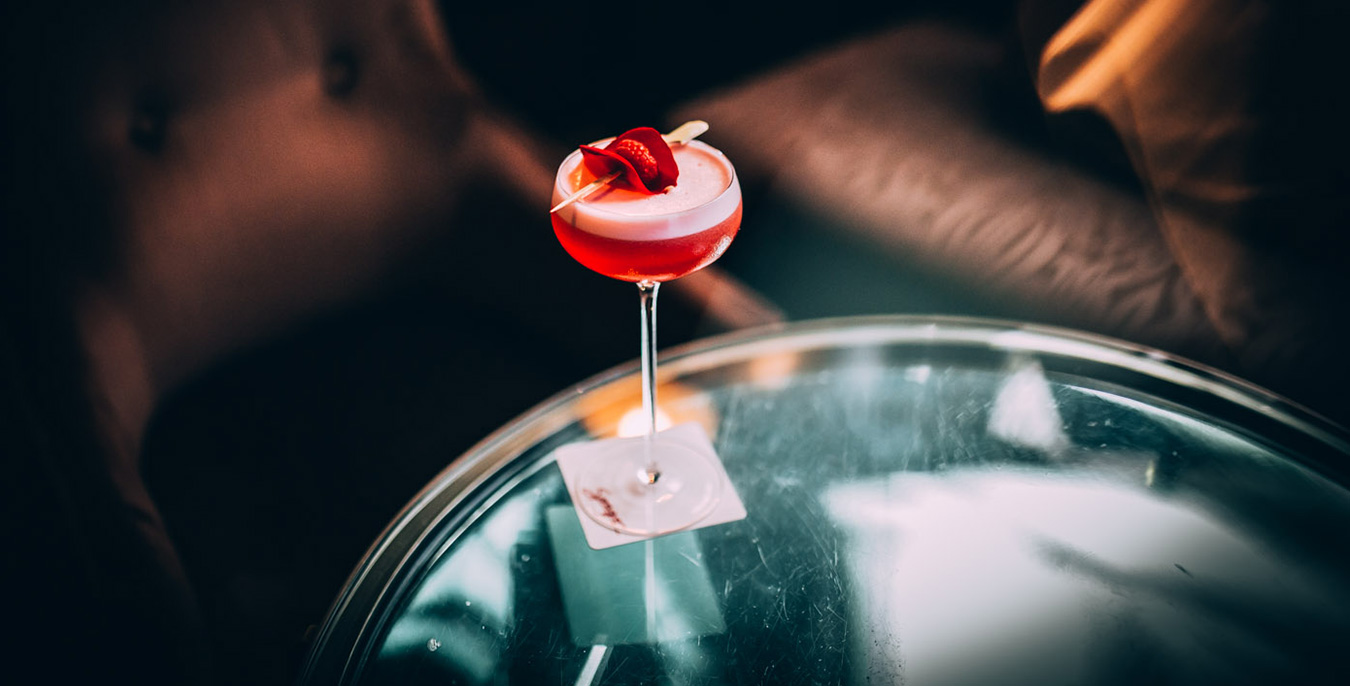

Our comments section is for members only.
Join today to gain exclusive access.